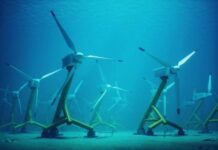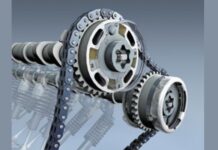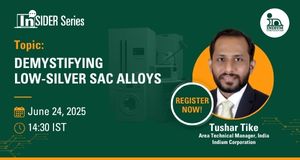The global quantum sensor market size is valued at USD 156.48 million in 2024 and is estimated to hit around USD 1,170.81 million by 2033, growing at a CAGR of 25.06% from 2024 to 2033.
Within the ecosystem of quantum technology, the most developed market is quantum sensing. The concepts of quantum mechanics are used by quantum sensors, albeit the principles used by various sensors vary. Applications for quantum sensing encompass all sensing applications that need higher precision than what is possible with existing technology. The need for critical-application data and high-precision measurements is rapidly increasing worldwide, and quantum sensors may be able to supply this need.
Quantum Technology Market Key Highlights:
- North America accounted for the largest market share of 38.65% in 2023.
- Asia Pacific is expected to grow at the fastest CAGR of 24.7% during the forecast period.
- By type, the atomic clocks segment contributed the biggest market share of 41.62% in 2023.
- By type, the other segment is expected to witness the fastest CAGR during the forecast period.
- By application, the other segment held the largest market share of 62.11% in 2023.
- By application, the magnetic field sensing segment held the second-largest share of 37.89% in 2023.
- By end-user, the navigation and transportation segment generated the highest market share of 31% in 2023.
- By end-user, the healthcare segment is observed to expand at the fastest CAGR during the forecast period.
Major Trends in Quantum Sensor Market
- Applications in various industries: Applications for quantum sensors are found in many different domains, such as positioning systems, communication technologies, electric and magnetic field sensors, microscopy, and geophysical research sectors including seismology and mineral prospecting.
- Accurate measurements: The far more precise data that quantum sensing offers can improve the functionality of current and future technologies by gathering and using better information to produce better outcomes. This is because quantum sensing uses atomic qualities to assess activity in the physical world.
- Training AI algorithms: Quantum sensing technology has the potential to create a whole new ecosystem where the unobservable may now be observed. This would provide distinct new data sets and insights from a variety of economic sectors that could be utilized to train AI algorithms for a wide range of applications.
AI impact on the Quantum Sensor Market
The integration of artificial intelligence (AI) into the quantum sensor market is revolutionizing the industry by enhancing the functionality, precision, and efficiency of quantum sensing technologies. AI algorithms are instrumental in processing the vast and complex data generated by quantum sensors, enabling real-time analysis and decision-making. This is particularly impactful in applications such as medical imaging, navigation, and environmental monitoring, where high levels of accuracy are paramount.
AI-driven optimization techniques also improve the calibration and error correction processes in quantum sensors, ensuring consistent performance across varying conditions. Additionally, AI facilitates predictive maintenance of quantum sensing equipment, minimizing downtime and operational costs.
Quantum Sensor Market Regional Analysis
U.S. Quantum Sensor Market Size and Forecast 2024 to 2033
The U.S. quantum sensor market size is estimated to grow from USD 43.76 million in 2024 and is projected to surpass around USD 324.64 million by 2033, growing at a double-digit CAGR of 24.94% from 2024 to 2033.
Technological Advancements Drive North America
North America held the largest share of the quantum sensor market in 2023 owing to the rise in the prevalence of illnesses like cancer, the rising trend and desire for driverless cars, and the expansion of research and development efforts. Additionally, there is a growing amount of public and private investment in the advancement of quantum entanglement and quantum technologies. Furthermore, the market share of quantum sensors in this area was highest in the United States.
Enacted in December 2018, the National Quantum Initiative (NQI) Act aims to expedite U.S. leadership in QIS technology. NSF supports scientific advancement by providing financing for research in a wide variety of scientific and technical fields at more than 2000 academic institutions around the U.S.
The Government of Canada recently announced that it is aiming to improve the GoC’s magnetic sensing capabilities by utilizing the most recent developments in magnetic sensor sensitivity and cost reduction. In situations when GPS is not available, the Canadian government is also interested in both short- and long-range navigation devices.
For instance,
- As a component of the National Quantum Strategy, the Minister of Innovation, Science, and Industry announced a $1.4 million investment in Quantum Industry Canada (QIC).
- An NRC-commissioned research from 2020 projects that, after quantum technologies gain traction, the Canadian quantum economy would be worth $139 billion (including all economic consequences) by 2045, employing 209,200 people and perhaps making up 3% of the country’s GDP.
Booming Interest in Quantum Technology is Driving Europe
Europe is estimated to grow at the fastest rate during the forecast period. With many universities, research centers, and businesses actively involved in the development of quantum technology, Europe has a solid basis in scientific research and technical innovation. This strong ecosystem encourages cooperation and information sharing, which propels the development of quantum sensing technology.
Furthermore, with the help of government financing and strategic alliances, European nations like Germany, the UK, and France have made large investments in quantum research and development projects. Furthermore, European sectors like healthcare, automotive, and aerospace are becoming more aware of the potential of quantum sensing for uses like enhanced materials testing, navigation systems, and diagnostic imaging. Europe will thus likely see a sharp increase in demand for quantum sensing technologies, making the quantum sensor market a major growth in the worldwide quantum sensing industry.
For instance,
- The UK is already at the forefront of quantum technology worldwide. Over the next 10 years, the UK government plans to invest £2.5 billion in quantum, more than tripling our current commitment. The goal is to draw in a sizable amount of private investment on top of that.
- The potential advantages of quantum computing throughout the world might reach $5–10 billion in the next three to five years and then $450–$850 billion in the following fifteen to thirty years.
- On April 26, 2023, the German government unveiled the “Action Plan for Quantum Technologies” and made a EUR 3 billion investment with the goal of making Germany a global leader in quantum technology and gaining sovereign access to this crucial emerging technology. A new strategic framework for the upcoming three years, from 2023 to 2026, will be established by the action plan.
Quantum Sensor Market Report Coverage
| Report Coverage | Details | |
| Market Size in 2023 | USD 149.03 Million | |
| Market Size in 2024 | USD 156.48 Million | |
| Market Size by 2033 | USD 1,170.81 Million | |
| Growth Rate from 2024 to 2033 | 25.06% | |
| U.S. Market Size in 2023 | USD 41.72 Million | |
| U.S. Market Size by 2033 | USD 324.64 Million | |
| Dominating Region | North America | |
| Fastest Growing Region | Asia Pacific | |
| Base Year | 2023 | |
| Forecast Period | 2024 to 2033 | |
| Segments Covered | By Type, By Application, By End-user, and By Regions | |
| Regions Covered | North America, Europe, Asia-Pacific, Latin America, and Middle East & Africa | |
Quantum Sensor Market Segmentation Analysis:
By Type Analysis:
the atomic clocks segment held the major share of the quantum sensor market in 2023. Numerous applications that demand extremely accurate time, including telecommunications networks, global positioning systems (GPS), and scientific research, rely on atomic clocks. There is a chance to redefine the standard (SI) unit of measurement as atomic clocks with optical clock frequencies can be 10,000 times more precise than their microwave equivalents.
- In September 2024, QuantX Labs, situated in South Africa, signed an agreement to supply Defense with its portable atomic clocks for $2.7 million.
- In May 2024, Aquark, a quantum technology provider, was awarded a £3.4 million ($4.27 million) contract to create the first cold atom clock that will be sold commercially in the UK.
- In November 2022, a $110 million Series B round of investment was announced by ColdQuanta, the leader of the global quantum ecosystem, to support the company’s ongoing commercialization of its product line, which includes atomic clocks, sensors, components, quantum computers, and quantum algorithms and applications.
By Application Analysis:
The magnetic field segment is estimated to grow at a significant rate in the quantum sensor market during the forecast period. In materials science and basic physics, precise measurements have been made possible by quantum sensors, which can identify even the smallest changes in magnetic or electrical fields. Detecting extremely weak magnetic fields is particularly useful for superconducting quantum interference devices (SQUIDs), which are extremely sensitive sensors.
By End-user Analysis:
The navigation and transportation segment dominated the quantum sensor market in 2023. In situations where conventional navigation systems are ineffective, military operations might be completely transformed by quantum navigation technology. Unmatched accuracy, independence, and security are provided by technologies. Global Navigation Satellite Technologies (GNSS) and Inertial Navigation Systems (INS) have constraints that these technologies promise to solve in military situations, whether on land, at sea, or in the air.
The healthcare segment is estimated to grow significantly during the forecast period. As seen by the growing number of start-ups in this industry, quantum sensors are making their way from labs to the marketplace. The application of quantum technologies to the healthcare industry has become a game-changer in a world where technology is developing at a breakneck pace.
Because quantum computers can effectively simulate chemical interactions, they have the potential to speed up the drug development process greatly. Quantum sensors have the potential to provide diagnostic techniques with hitherto unheard-of levels of sensitivity, enabling the identification of biomarkers. Quantum cryptography may also improve medical record security and enable patients and healthcare professionals to communicate in a genuinely confidential manner.
Competitive Landscape & Major Breakthroughs in the Quantum Sensor Market
The high precision of quantum sensors has increased their usage in a wide variety of industries, due to which the key market players are significantly making efforts to increase the use of quantum sensors. Some of the major players in the market are Q-CTRL, Qnami, QuantumDiamonds, ColdQuanta, Inc., Robert Bosch GmbH, BAE Systems, Apogee Instruments, Inc., Miraex, Q.ANT GmbH, and Zurich Instruments AG.
For instance,
- In November 2023, Munich-based QuantumDiamonds, a business in the quantum sensing space, announced that it had raised €7 million in initial money. The fundraising was headed by pan-European VC Earlybird, known for its investments in N26 and UiPath, and UK-based VC IQ Capital, which contributed €3 million. EntrepreneurTUM, First Momentum, Creator Fund, Onsight Ventures, and a number of semiconductor-related angel investors made further investments.
What is Going Around the Globe?
- In November 2024, a £9.5 million ($12.2 million) fund was created by Innovate UK, a division of UK Research and Innovation (UKRI), to encourage initiatives using quantum networks and computers.
- In September 2024, in an initial funding round headed by the NATO Innovation Fund and supported by EIFO, UKI2S, and MBDA, Aquark Technologies secured €5 million to develop quantum technologies for protecting vital infrastructure.
- In June 2024, the president of the French defense innovation agency AID claimed that the French Navy received its first serially manufactured quantum-technology sensor this year, a quantum gravimeter for scanning the seabed. Such sensors may be used in the future to detect hostile submarines or for navigation.
Segments Covered in the Report
By Type
- Gravitometers
- Atomic Clocks
- PAR Sensors
- Magnetometers
- Others
By Application
- Magnetic Field Sensing
- Others
By End-user
- Healthcare
- Defense and intelligence
- Construction and mining
- Energy and oil and gas
- Agriculture
- Navigation and transportation
- Others
By Region
North America
- U.S.
- Canada
Asia Pacific
- China
- Japan
- India
- South Korea
- Thailand
Europe
- Germany
- UK
- France
- Italy
- Spain
- Sweden
- Denmark
- Norway
Latin America
- Brazil
- Mexico
- Argentina
Middle East and Africa (MEA)
- South Africa
- UAE
- Saudi Arabia
- Kuwait

















